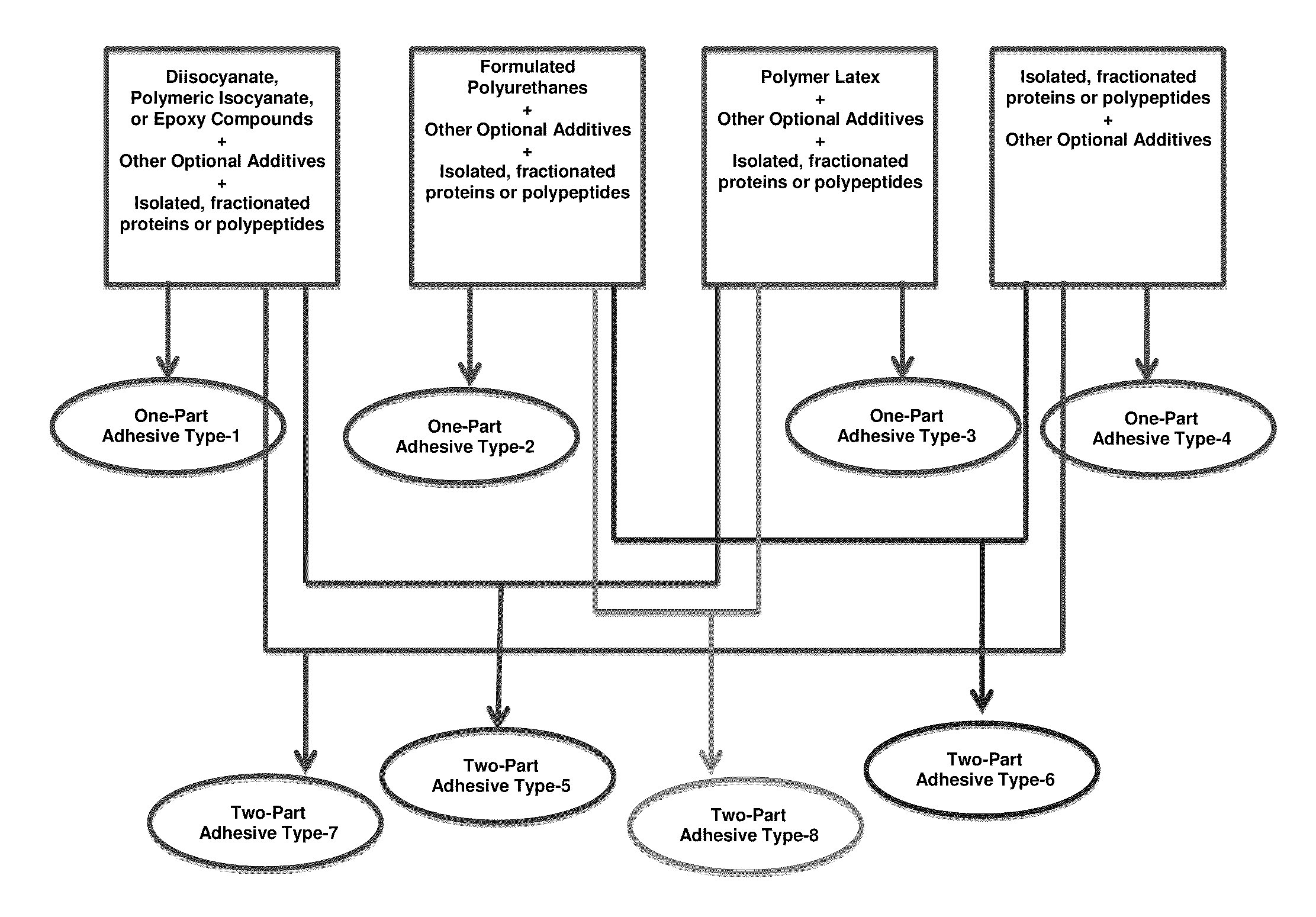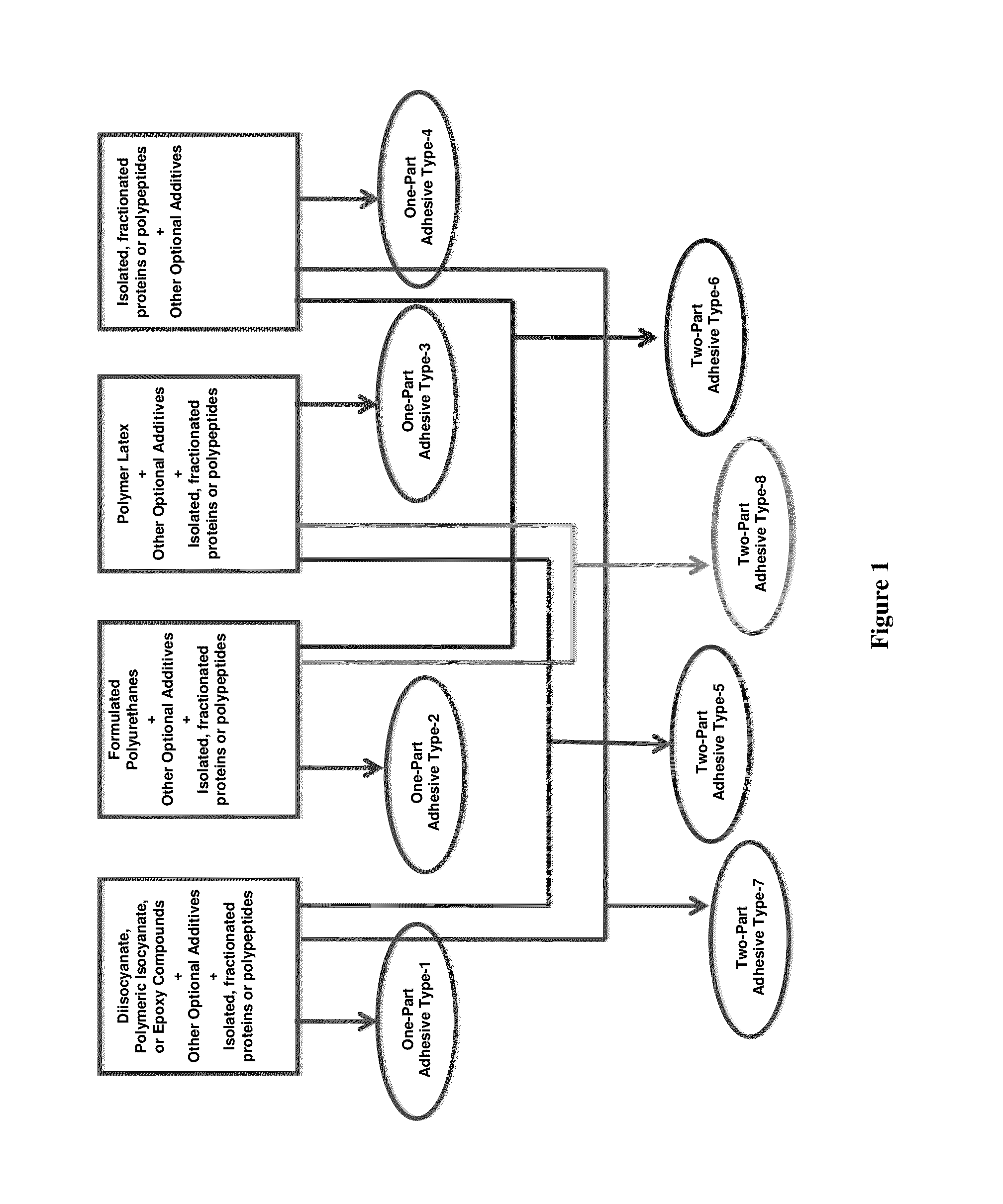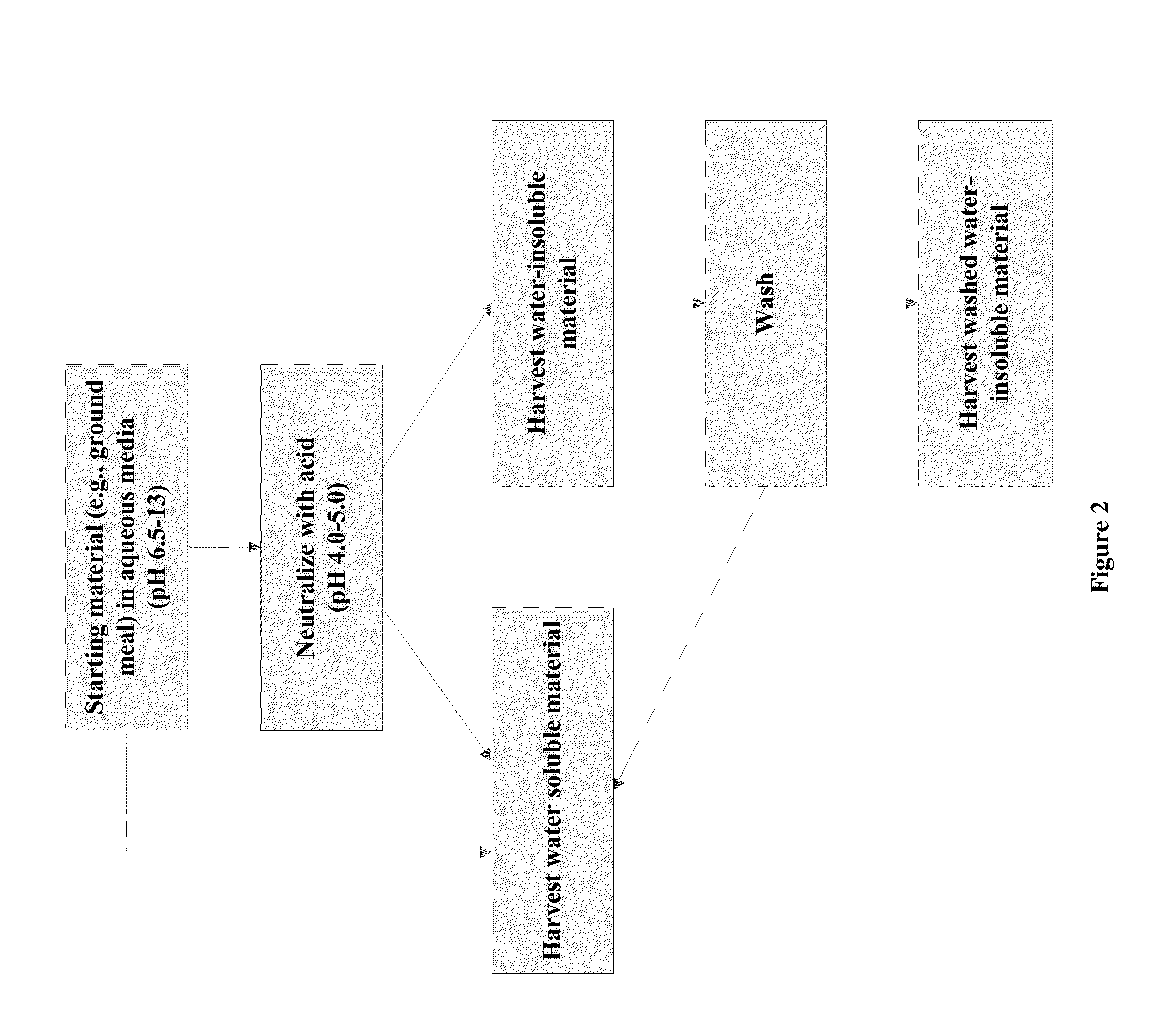Protein-containing emulsions and adhesives, and manufacture and use thereof
a technology of emulsions and adhesives, which is applied in the field of protein-containing emulsions and adhesives, can solve the problems of many attempts to commercially use pmdi to replace uf, and it is impossible to achieve significant commercial success in certain industries
- Summary
- Abstract
- Description
- Claims
- Application Information
AI Technical Summary
Benefits of technology
Problems solved by technology
Method used
Image
Examples
example 1
One-Part Adhesive Comprising Polymeric Isocyanate, Polyol, and a Polypeptide Composition Derived from Whey
[0211]Digested whey protein (lot 5-72, referred to herein as digested whey protein pH 6.5) was obtained as an experimental sample from Prof. S. Braun, the Laboratory of Applied Biology at the Hebrew University of Jerusalem, Israel, and was prepared as follows; Whey protein (WPI-95® Whey Protein Isolate; Nutritteck, 24 Seguin Street, Rigaud, QC, Canada J0P 1P0) was suspended in water at a ratio of 1:6 (w / w). The pH of the suspension was adjusted to pH 7 with 5N NaOH, and was heated to 55° C. while stirring. FLAVOURZYME 500 MG® (from NOVOZYMES') then was added at a ratio of 20 g per kg of whey protein, and the mixture was stirred at the same temperature for 4 hours. The resulting aqueous mixture was pH 6.5. The resulting mixture then was spray-dried to yield digested whey protein as a pale yellow powder.
[0212]A prepolymer (JM30-1) was prepared by reacting 73.81 parts of a polymeri...
example 2
One-Part Adhesive Comprising Polymeric Isocyanate and a Protein Derived from Whey
[0219]The procedures for prepolymer preparation, adhesive preparation, and block-shear sample preparation were identical to those reported in Example 1.
[0220]A prepolymer was prepared (JM39-1) using the same PMDI and the same digested whey protein (pH 6.5). This prepolymer was analogous to the prepolymer used in Example 1 (JM30-1) with one exception: the polyol component was omitted and was replaced with an equivalent level of the same digested whey protein. The final composition was approximately 75 / 25 (w / w) PMDI / protein. An adhesive (54-1) then was made with 0.1 phr FeAcAc to determine the effect of the presence or absence of polyol on bond strength. The average block-shear bond strength of Lodgepole Pine samples made with the 54-1 adhesive was determined to be approximately 3,700 pounds (+ / −980). This result was very similar to that obtained for the analogous adhesive in Example 1 which contained a p...
example 3
Effect of pH on the Reactivity of Digested Whey Protein
[0222]A prepolymer sample was made having the same PMDI / protein ratio as sample JM39-1 from Example 2 (approximately 75 / 25 PMDI / protein) using the same synthetic methods as outlined in Example 1. However, in this example, a different type of digested whey protein was employed.
[0223]The protein derivative was obtained as an experimental sample (lot 5-80, referred to herein as digested whey protein pH 3.5) from the Laboratory of Applied Biology at the Hebrew University of Jerusalem, Israel, and was prepared as follows. Whey protein (WPI-95® Whey Protein Isolate; Nutritteck, 24 Seguin Street, Rigaud, QC, Canada J0P 1P0) was suspended in water at the ratio of 1:6 (w / w). The pH of the suspension was adjusted to pH 7 with 5N NaOH. Flavourzyme 500 MG® (NOVOZYMES') was then added at a ratio of 20 g per kg of whey protein, and the mixture was stirred at ambient temperature for 18 hours. The pH of the resulting mixture was then lowered by...
PUM
 Login to View More
Login to View More Abstract
Description
Claims
Application Information
 Login to View More
Login to View More - R&D
- Intellectual Property
- Life Sciences
- Materials
- Tech Scout
- Unparalleled Data Quality
- Higher Quality Content
- 60% Fewer Hallucinations
Browse by: Latest US Patents, China's latest patents, Technical Efficacy Thesaurus, Application Domain, Technology Topic, Popular Technical Reports.
© 2025 PatSnap. All rights reserved.Legal|Privacy policy|Modern Slavery Act Transparency Statement|Sitemap|About US| Contact US: help@patsnap.com



